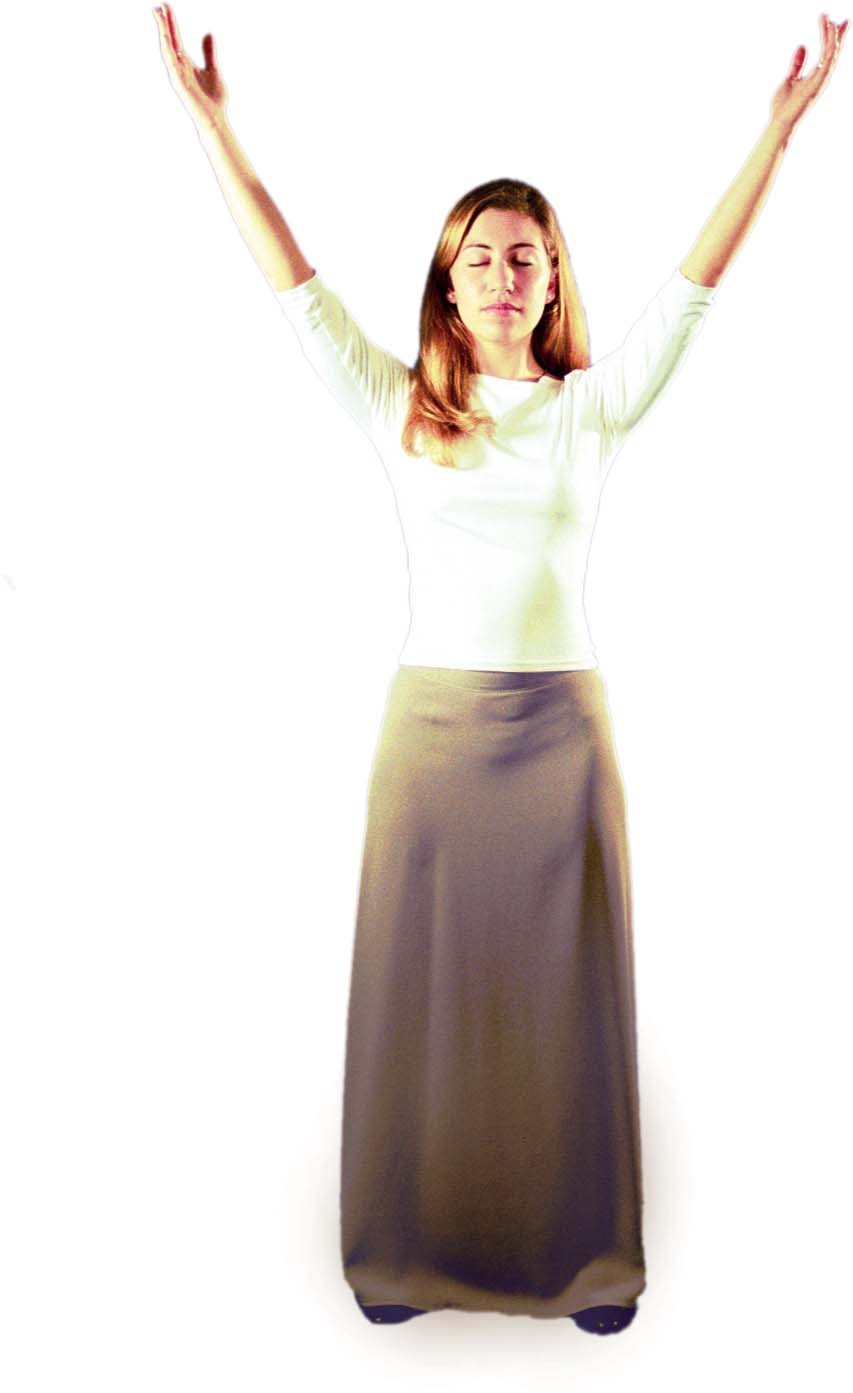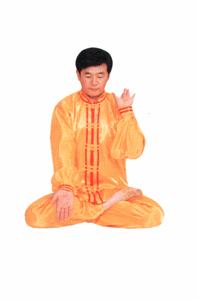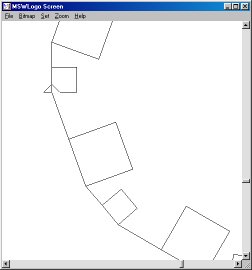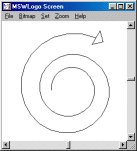Logo programming language
|
|
The Logo programming language is an adaptation by Wally Feurzeig and Seymour Papert of the Lisp programming language that is easier to read. One could say that Logo is Lisp without the parentheses. Today, it is known principally for its "turtle graphics", but it also has significant list handling facilities, file handling and I/O facilities. Logo can be used to teach most computer science concepts, as Brian Harvey does in his "Computer Science Logo Style" trilogy. It can also be used to prepare "microworlds" for students to investigate.
| Contents |
|
|
History of Logo
Logo was created in 1966 at BBN, a Cambridge research firm, by Wally Feurzeig and Seymour Papert. Its intellectual roots are in artificial intelligence, mathematical logic and developmental psychology. The first four years of Logo research, development and teaching work was done at BBN. The first implementation was written in LISP on a PDP-1. Its name was "ghost". The goal was basic problem solving; the turtle gave immediate (non-written) feedback so bugs could be spotted -- and it was fun. Lots of other effects have been proposed as causes... Power was NOT a significant factor in the design. However, ease of use for non-typists who had to use a Teletype, was a big consideration, plus informative error comments.
The turtle was a rather late innovation. Logo is not too much different now from the basic concepts before the first turtle. The first turtle was a radio controlled (wireless) floor roamer named "Irving". Irving had touch sensors and could do forward, back, right, left (rotations), and ding (Irving had a bell). The earliest school users were at Muzzy Jr High, Lexington MA.
Implementations of Logo
There are over 130 implementations of Logo, each of which has its own strengths. A popular cross-platform implementation is UCBLogo. MSWLogo, its freeware Windows derivative, is commonly used in schools in the United Kingdom. Comenius Logo is available in Dutch, German, Czech etc. and is worth considering.
A modern derivative of Logo is a variation that allows thousands of "turtles", each moving independently. There are two popular implementations: MIT StarLogo and NetLogo. These derivatives allow for the exploration of emergent phenomena and come with many experiments in social studies, biology, physics, and many other sciences. Although the focus is on the interactions of a large number of independent agents, these variations still capture the original flavor of Logo.
There is no single agreed-upon Logo language definition or standard, only a loose tradition. As a result, there are substantial differences between the many dialects of Logo that have evolved. The code examples shown below would work in many Logo dialects, but not all.
Logo programming
The idea is that a turtle with a pen strapped to it can be instructed to do simple things like move forward 100 spaces or turn around. From these building blocks you can build more complex shapes like squares, triangles, circles--using these to draw houses or sail boats.
The turtle moves with commands that are relative to its own position, "LEFT 90" meant rotate left by 90 degrees. A student could understand (and predict and reason about) the turtle's motion by imagining what they would do if they were the turtle. Papert called this "body syntonic" reasoning.
The idea of turtle graphics is also useful for example in Lindenmayer system for generating fractals.
Turtle programming
The following are examples of Turtle code. While seemingly very simple, turtles can be given groups of instructions, essentially creating libraries of more complex commands. In practice short forms are used. For example, "LEFT 90" is written "LT 90". Key words are usually written in upper case for beginners, but more advanced texts use lower case.
Example 1: a square
FORWARD 100
LEFT 90
FORWARD 100
LEFT 90
FORWARD 100
LEFT 90
FORWARD 100
Missing image
Ex1.jpg
Basic Square
This would draw a square with sides 100 units long (but the turtle still has to turn LT 90 to be in the starting position).
Example 2: a triangle
The commands may be written on one line, or more.
FORWARD 100 RIGHT 120
FORWARD 100 RIGHT 120 FORWARD 100
Missing image
Ex2.jpg
Basic Triangle
Would draw a triangle.
Example 3: dotted line
The turtle's pen could be lifted and lowered; drawing a dotted line was rudimentary. In this example we'll use the short form for FORWARD, which is FD. (A typical command can then be read "FD space 10", specifying everything clearly and saving frustration.) Anything written after the ; (semicolon) is ignored, allowing the coder to insert comments.
FD 10 ;(drawing a line and moving) PENUP ;(now we've lifted the pen so it won't draw anything even if we do move) FD 10 ;(not drawing but moving) PENDOWN ;(now we've lowered the pen so it draws a line wherever the turtle moves) FD 10 ;(drawing a line and moving) PENUP FD 10 ;(etc...) PENDOWN FD 10
Example 4: loops
You could also use loop (repeat) commands. This would draw the exact same box as in the first example:
REPEAT 4 [FD 100 RIGHT 90]
Which would execute the command "FD 100 RIGHT 90" four times.
A simplistic circle consists of 360 individual rotations with a step forward, so "REPEAT 360 [FD 1 RIGHT 1]" would have the expected result.
Example 5: new words
You can teach the turtle new words, i.e. groups of instructions, or procedures. This can be done from the Logo prompt or an Editor, which is invoked by EDALL in many Logo dialects. The commands TO CHAIR and END must be entered on separate lines.
EDALLTO CHAIR REPEAT 4 [FD 100 RT 90] FD 200 END
Once one is finished with the editor, one must exit from it. The new word is saved into the available vocabulary, but the definition will be lost once the Logo interpreter is stopped. In this case, any time CHAIR is entered, "REPEAT 4 [FD 100 LEFT 90] FD 200" will be executed. CHAIR can be used as a command; for example, REPEAT 4 [CHAIR] would compound the CHAIR operation four times.
Example 6: erasing (in the UCBLogo dialect)
The turtle can erase a line, using the command PENERASE (PE). The pen can be restored with the command PENPAINT (PPT).
EDALL;(to enter the editor mode, then the actual procedure)TO ERASECHAIR PE REPEAT 4 [FD 100 RT 90] FD 200 PPT END
CS CHAIR WAIT 200 ERASECHAIR
This example introduces two new instructions, which are best taught by running them through a Logo interpreter and observing the result. This typifies the general spirit of Logo.
Example 7: parameters: giving the word changeable information
Logo can pass extra information to its words, and return information. We must tell the word to expect something and give it a name. Notice the use of the colon. We are passing 'by value' and the colon is pronounced as 'the value of'. When the procedure is run with a command like CHAIR 200, the size takes the value 200 so we go 'FD the value of 200'.
EDALL (to enter the editor mode, then the actual procedure)
TO CHAIR :thesize
REPEAT 4 [FD :thesize RT 90] FD :thesize FD :thesize
END
Try
CS REPEAT 9 [CHAIR 50 RT 20 CHAIR 100 WAIT 50 RT 20]
If you do need help, type HELP, or HELP "HOME (note the single quote mark.)
The language
Logo is an interpreted language. It is not case dependent, but retains the case used for formatting. It is written in lines. It is a compromise between a sequential programming language with block structures, and a functional programming language. There is no 'standard' LOGO, but UCBLogo is highly regarded. It is a teaching language but its list handling facilities make it remarkably useful for producing useful scripts.
Functions and procedures
Each line is made up of "function calls", of which there are two types:
- commands (which do something—effects—but don't return a value) like
print - operations (which just return a value, its output) like
sum,firstorreadlist.
A command is similar to a Pascal procedure, and an operation is similar to a Pascal function. A special subset of operations, called predicates, which just output the word true or false, are conventionally written with a final p. Examples include emptyp, wordp, and listp.
- Expressions can be primitives, or can be defined by the user.
- Expressions can take zero, one or more parameters.
Mathematics in Logo uses prefix notation, like: sum :x :y, product :x :y, difference :x :y, quotient :x :y. Infix is also available.
help "keyword ;(will bring up a full description of the expression).
Logo allows for recursion, the process where a procedure calls itself.
Example 8: A spiral drawn using recursion
to spiral :size if :size > 30 [stop] ; a condition stop fd :size rt 15 ; many lines of action spiral :size *1.02 ; the tailend recursive call end
spiral 10
Data
There are three datatypes in UCBLogo,
- the word,
- the list,
- the array.
A number is a special case of word.
There is no strong typing. The interpreter detects the datatype by context.
There are two important symbols
- The colon
:- this means 'the contents of'
This is an extremely useful symbol that keeps reminding students that a variable is really some 'place' in memory.
- The quote- this means '"the word is evaluated as itself"', or '"its value after evaluation is the same as it was before"'. This is important.
A number is a special case of self evaluation- it really could be written with a quote 2 is really "2
Assignment in Pascal x:= y +3 becomes in Logo
make "x sum :y 3
or
make "x sum :y "3
make takes 2 parameters, the second of which here is sum :y "3. Now sum takes two 'parameters' and is a 'operation', thus the calculation is possible. "3 evaluates to 3, and :y takes the contents of the thing called y, these are summed giving a number. The effect of make is to place the result into the first parameter.
An alternative way of looking at this, maybe, is that the second parameter is 'passed by value' while the first is 'passed by address.'
Indirection (within a procedure) is possible with the form make :x :x + 1.
Scoping
Variables don’t have to be declared before use. Their scope is then global.
A variable may be declared local, then its scope is limited to that procedure and its subprocedures. This is dynamic scoping. Calling a 'procedure' with 'inputs', creates 'local variables' which hold the contents of the parameters.
Lists
Discussing lists comes as a surprise to a Pascal programmer, who has managed quite well without them, however this opens many new possibilities. Arrays are also provided for the timid.
- Operators exist to convert words into lists, and lists into arrays and back again.
- This data type has the advantage over arrays that it is infinitely expandable. Data are extracted using the operations first, butfirst, last, butlast, member and item. Data are added using sentence fput and lput.
- A list can be considered to be a queue with the operators queue and dequeue, or a stack with the operations push and pop.
- Recursion rather than iteration is the natural method to process lists.
Example 9: using list primitives to extract the first five members of a list
One way would be to use iteration.
to firstfive :alist ifelse lessp count :alist 5 [ op :alist ][ make "olist [] repeat 5 [ make "olist lput first :alist :olist make "alist bf :alist ] output :olist ] end show firstfive [1 2 3 4 5 6 7 8 9 ] [1 2 3 4 5] foreach firstfive [1 2 3 4 5 6 7 8 9 ] show 10 - ? [9 8 7 6 5]
Another, more elegant way would be
to firstn :num :list if :num = 0 [output []] output fput (first :list) (firstn :num-1 butfirst :list) end to firstfive :list output firstn 5 :list end
This method uses recursion, and is an example of a 'functional' rather than a 'imperative' programming approach.
Control structure commands
The standard Pascal controls are available, there is selection
* ifelse test [ do_if_true list ] [do_if_false list]
There are iteration commands
* while condition [instruction list] * until condition [instruction list ] * repeat number [instruction list]
Recursion is Logo's preferred processing paradigm.
Template iteration
The Pascal programmer will be surprised by a series of list based control structures. The basic idea is that you have two lists
OPERATION [ a list of commands ] [ many data items ]
each of the commands is applied in turn to each of the data items. There are several of these template commands with names like MAP, APPLY, FILTER, FOREACH, REDUCE and CASCADE. They repesent four flavours of template iteration, known as explicit-slot, named-procedure, named-slot (or Lambda) and procedure-text.
show map [? * ? ] [ 5 6 7 ] [25 36 49 ] show filter [ (count ?) > 4 ] [ the quick brown fox jumps over the lazy dog ] [quick brown jumps] show foreach [1 2 3 4 5] [ ? * 10 ] [10 20 30 40 50]
RUN [ list of commands ] ;run a list of commands (or programs) from in a program.
Property Lists
A property list is a special list where the odd number items are property name, and the even are property values. There are three commands to process property list.
pprop :listname :name :value ;to add a new pair to the list remprop :listname :name :value ;to remove a pair to the list show gprop :listname :name ;to get the matching value from the list
I/O Commands
Text may be written to the command window (output stream) using print, show and to the graphics window using label
The standard commands are readlist readword readchar with the normal input stream being the keyboard. In Unix tradition the input stream can be changed, so input can come from a disk file. Similarly, output can be redirected. The technique will be familiar to Pascal Programmers- using a sequence
openread [filename] setread[filename] setreadpos nn readchar setread[] close [filename].
There are equivalent commands to change the output stream, openwrite, openappend, setwrite, setwritepos nn.
dribble [filename]
Creates a transcript of everything that is typed in or outputted to the command window.
nodribble
This turns it off.
Graphics
Turtle graphics is a powerful method of introducing thinking but LOGO also has a few useful Cartesian commands
home ;returns the turtle to (0,0) setx xx sety yy ; sends the turtle, still drawing to (xx,yy) seth nn ; sets the turtle on a heading or compass bearing of (nn)
Example 10: calculating and drawing a sundial for a given latitude
This is a typical garden dial. The graphic can be printed and transferred to wood or brass to make an accurate garden timepiece.
to dial
cs show [Type in your latitude as a whole number]
make "latitude readword ;uses keyboard input
for [i 0 6 1][
make "ang arctan product sin :latitude tan product :i 15 ;the calculation
rt :ang fd 200 bk 200 lt :ang ;draw the morning line
lt :ang fd 200 bk 200 rt :ang ;use symmetry to draw the afternoon line
]
pu setx -300 sety -300 seth 90 pd ;send the turtle to the bottom
fd 300 seth 270 rt 90 - :latitude fd 300 ;draw the [[style]] or [[gnomon]]
pu home pd ;tidy it up
end
A sundial plate must be calculated for its latitude using the formula
x= arctan( sin(latitude)*tan(HourDiff * 15) )
The Gnomon Angle = 90 - latitude.
Missing image
Ex10_38N.jpg
Sundial in Berkeley, California
This dial is set for 38N, the latitude of Berkeley, California- the home of UCBLogo. A small correction should be made for Longitude.
MSWLogo extensions
MSWLogo supports multiple turtles, and 3D Graphics. MSWLogo allows input from COM ports and LPT ports and also 'hardware' ports. MSWLogo also supports a windows interface thus I/O is available through this GUI- and keyboard and mouse events can trigger interrupts.
Hello World
TO HELLO
PRINT [Hello world]
END
Bibliography
- Computer Science Logo Style, Brian Harvey, MIT Press (3 volumes) ISBN 0-262-58148-5, ISBN 0-262-58149-3, ISBN 0-262-58150-7.
- The Great Logo Adventure, Jim Muller, Doone Publications ISBN 0-9651934-6-2
External links
- MicroWorlds EX & MicroWorlds EX Robotics (http://www.microworlds.com): MicroWorlds is a popular modern multimedia version of Logo for the Mac and PC. It can also control LEGO and Cricket robots and is used by students around the world in several languages.
- Berkeley Logo (http://www.cs.berkeley.edu/~bh/logo.html) (UCBLogo, GNU)
- Gary Stager's Logo Resources (http://www.stager.org/logo.html): A collection of Logo resources, tips, tricks and articles by Gary Stager.
- Logo Foundation (http://el.media.mit.edu/logo-foundation/): A group devoted to informing people about Logo and supporting them in their use of the language
- MSWLogo (http://www.softronix.com): To download MSWLogo.
- Comenius Logo (http://www.input.sk/slogo/) A popular European Logo from Comenius University.
- rLogo (http://www.embry.com/rLogo/): Play with a turtle online (you will need a Java-enabled browser). This only implements graphics.
- MIT StarLogo (http://education.mit.edu/starlogo/) Logo with more than one turtle for simulating complex self-organizing systems.
- NetLogo (http://ccl.northwestern.edu/netlogo/)
- Logo# (http://sourceforge.net/projects/logosharp/): an open source C# implementation of Logo.
- Computer Science Logo Style (http://www.cs.berkeley.edu/~bh/logo.html) The complete text of Brian Harvey's 3 volume classic in PDF and other formats.
- How to Think Like a Computer Scientist (http://ibiblio.org/obp/thinkCS/) Logo version
- Learning Logo (http://mckoss.com/logo/) Lessons for young people (using MSWLogo)
- Logo project memos (http://www.sonoma.edu/users/l/luvisi/logo/logo.memos.html) List of the original Logo memos from 1971-1981
- iKnowthat.com "Botz" (http://www.iknowthat.com/com/L3?Area=BattleBot_Free) Botz a web based Logo-like application. Program your bot to draw, solve puzzles, and even battle other bots. Can also save your bots online and email them to others or challenge others to a battle.
- "Imagine" (http://imagine.input.sk/international.html) Imagine, a Comenius Logo successor, featuring use of multimedia, better object support and networking
Template:Major programming languages smallde:Logo (Programmiersprache) es:Lenguaje de programación Logo fr:Logo he:לוגו (שפת תכנות) it:Logo nl:Programmeertaal Logo pl:Jêzyk programowania Logo pt:Logo zh:Logo程序设计语言




